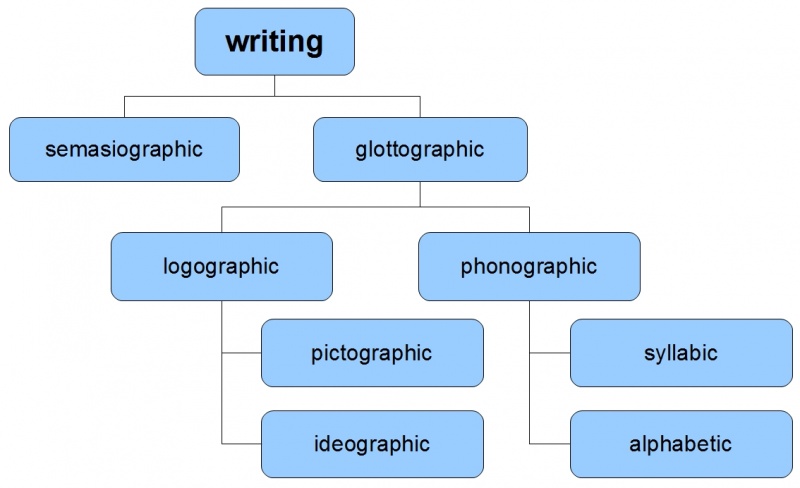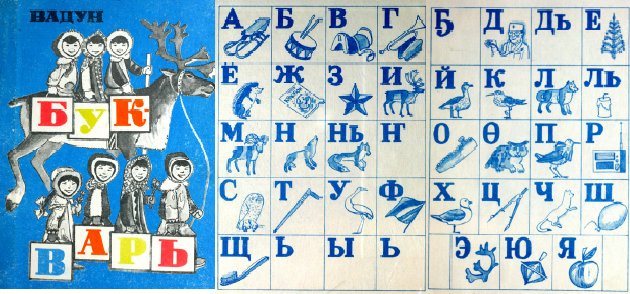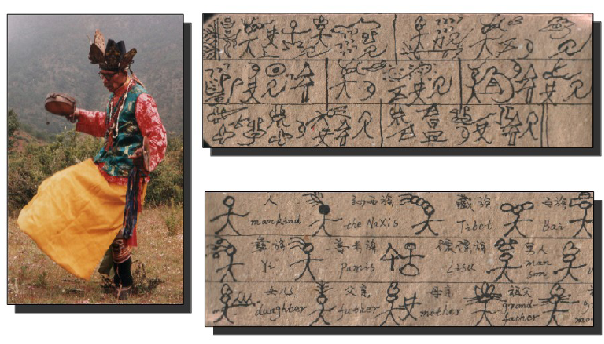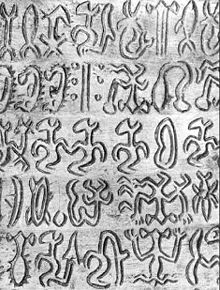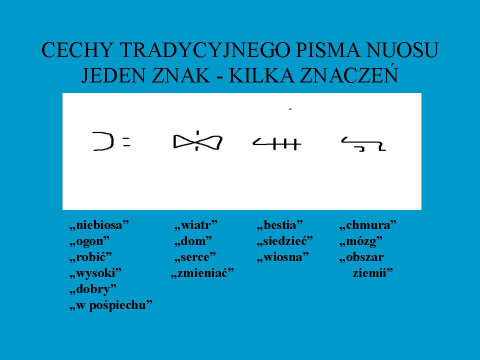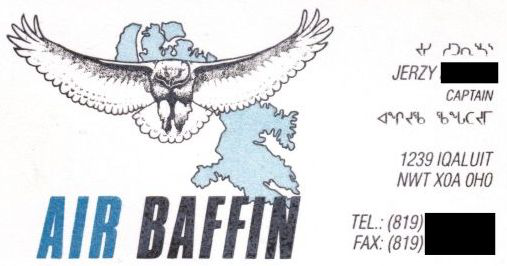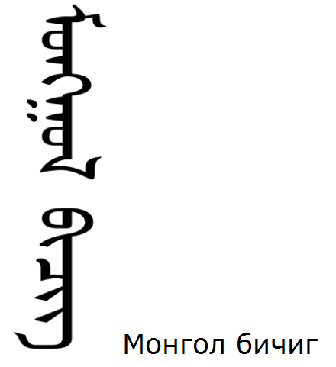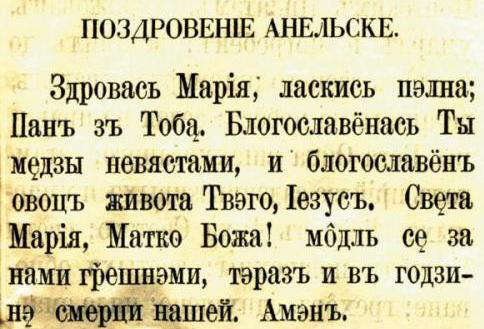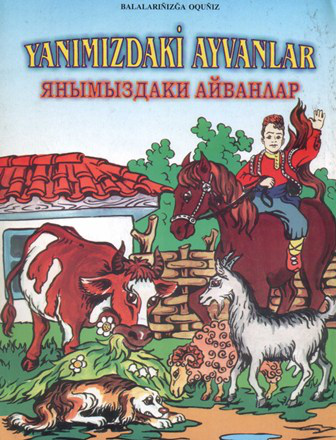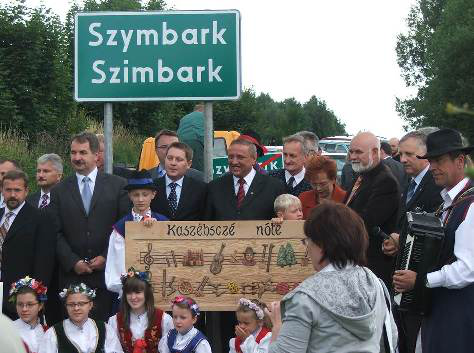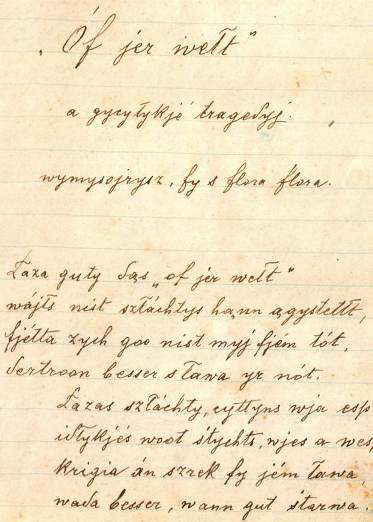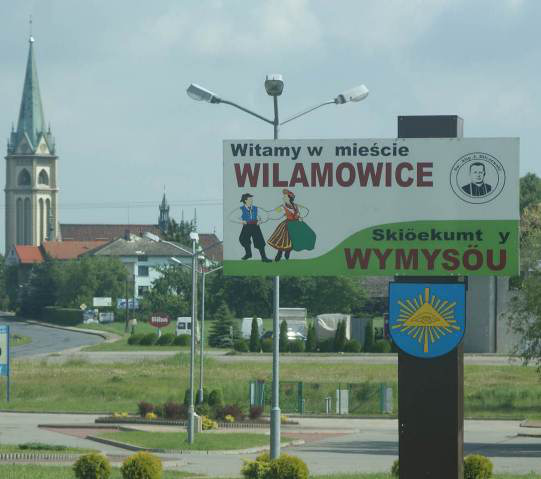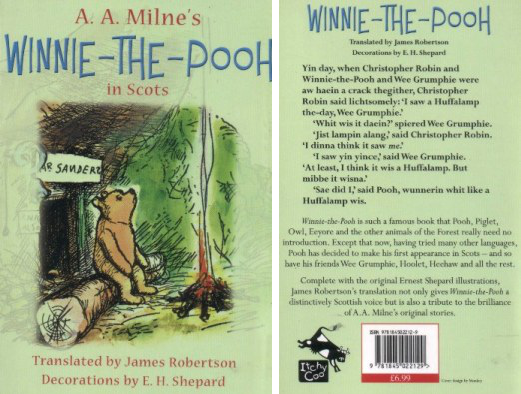Book of Knowledge
Chapters: 1 2 3 4 5 6 7 8 9 10
List of all languages referred to in the Book of Knowledge and other sections of the website.
DOWNLOAD and print out the Book of Knowledge.
Let’s Revise! – Chapter 5
Go to the Let’s Revise section to see what you can learn from this chapter or test how much you have already learnt!
Chapter author: Tomasz Wicherkiewicz
Chapter contents:
Writing systems of the world / Typology of writing systems
- Semasiography
- Pictographic writing systems
- Ideographic writing systems
- Syllabic writing systems
- Alphabetic writing systems
- Transcription
- Transliteration
Developing a written form of small languages – graphisation
Notes
References & further reading
Writing systems of the world / Typology of writing systems
The vast majority of languages have existed and functioned predominantly or exclusively in the form of oral transmission. That is why, in the case of both endangered languages and cultures, the heritage of oral tradition is the key to understanding the collective, social and ethnic human memory. However, everything that is to be passed on needs to be remembered, oftentimes in the collective memory of a community. For thousands of years, there have been two means for this goal: oral literature (or more generally oral culture) that was transmitted from generation to generation, and attempts to communicate with language in time (e.g. with the descendants) or in space (e.g. from a distance) by the means of graphic record.
WRITING AND WRITING SYSTEM
Writing is the symbolic representation of language through the use of visual symbols. A writing system is a way of recording a language established with a set of visual symbols and rules of orthography.Writing is the symbolic representation of language through the use of visual symbols. A writing system is a way of recording a language established with a set of visual symbols and rules of orthography.
There were a few languages, however, which had been used only in writing (Majewicz 1989: 236), such as kawi (a literary language based on the Old Javanese grammar, with a substantial part of vocabulary borrowed from Old Indian Sanskrit), Classical Tibetan or Classical Chinese wenyan.
Writing, unlike speech, is not based on an innate faculty and not acquired naturally. It has to be learned through conscious and long-lasting work. This may lead to a situation in which some users of a language are not able to use the writing systems, even if these are traditionally established in the language used by a given community (illiteracy).
The history of writing most probably dates back to 5 000 years ago, although the first attempts of narrative graphic expression in the form of cave paintings or clay inscriptions are dated respectively to 20 and 10 thousand years ago. Ideographic cuneiform script carved on clay tablets is the oldest attested form of writing.
The cuneiform script was used to write many languages which became extinct a long time ago. However, linguists managed to decipher some of these languages from the cuneiform writings, e.g. Sumerian, Akkadian, Old Persian and Ugaritic.
The materials used in the process of deciphering the oldest writings were usually the inscriptions carved in stone or imprinted on clay tablets. Other writing materials, such as wood, bark, leather, bones, animal shell, papyrus and paper started to be used only with the later development of writing.
* * *
Writing systems may be divided into several types depending on the relation between the individual visual symbols (called graphemes) and their content:
semasiographic systems (from the Greek σημασία [semasía] ‘meaning, marking’) in which graphic symbols represent concepts directly and are not dependent on any linguistic structures (some linguists do not recognise them as proper writing systems);
glottographic systems (from the Greek γλῶττα [glõtta] ‘tongue’) in which elements of speech are represented in writing by graphemes. Depending on which of the layers of speech they represent, the systems are divided into:
- logographic script (from the Greek λόγος [lógos] ‘thought, word, mind’) where graphic symbols indicate particular concepts (simple or complex):
- pictographic script uses graphemes, which constitute visual (pictorial) representations of the objects in the surrounding world and bear much resemblance to the objects they symbolise;
- whereas, if the graphic symbols are (already) (almost) only conventional representations of concepts (often made of pictograms), this kind of script is called ideographic;
- in phonographic writing systems (from the Greek φωνή [phōnē] ‘sound, voice’) each grapheme represents a sound unit of language, e.g. a syllable or a phoneme.
Semasiography
The illustration below is a letter sent by a Yukaghir girl to a young man. According to the sources, the symbols resembling a conifer are people. Figure c is the author of the letter (the row of dots represents girl’s plaited hair). Figure b is the addressee, former lover of the writer, who is now in a relationship with a Russian woman (figure a). The line starting from her and going in between the figures b and c means that she has broken the ties between the Yukaghir couple. Nevertheless, the new relationship is stormy, which is symbolised by crossed lines between the two. Lines around the figure c depict the sadness of the deserted girl living alone in her Yukaghir house (the polygonal structure around figure c). She is still thinking of the man b (shown by the curly line). But there is another young man (figure d), who is thinking positively about the author of the letter (a similar line). If the addressee wants to get back with the Yukaghir girl, he should do this as soon as possible, before there are children in the household of the girl c and man d (two little conifers on the left).
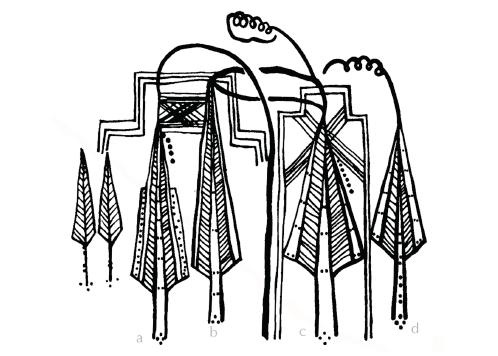
Sign, Symbol and Script : An Account of Man’s Efforts to Write. New York: Putnam’s Sons. 44-45, in: Sampson 1985: 28-29.
The message transmitted through this picture is relatively detailed. It is also depicted conventionally, which means that in order to understand it, one has to know the conventions behind the symbols and their written equivalents. However, individual symbols do not indicate elements of a spoken language and can be understood (verbalised) in many equally valid ways. Only the reference to the general concept of the message is coherent. Some linguists do not agree that the Yukaghir letter is a piece of writing at all. They consider it a fleeting piece of art produced on the spot on a birch bark, rather than an example of communication through language.
The Yukaghirs live in Sakha Republic and Magadan Oblast in north-eastern Siberia, in enclaves hundreds of kilometres away from each other (see Vakhtin 1991). Northern (Tundra) Yukaghir and Southern (Kolyma or Forest) Yukaghir are classified as an isolated group of languages possibly related to Uralic languages (comprising Samoyedic and Finno-Ugric groups). They are spoken respectively by 90 and 30 people (according to Ethnologue 2009). Since Yukaghir was taught in schools, teaching materials for this language have been published, for example Букварь для первого класса юкагирских школ (‘A primer for the first grade of Yukaghir schools’) by G.N. Kurilov printed in Yakutsk in 1987. It contained the Yukaghir alphabet, which was based on the Russian Cyrillic alphabet and completed with a few additional letters.
Pictographic writing systems
Pictographic writing systems have been used by the Naxi in China, Native American tribes (e.g. Ojibwa), the Eskimos (e.g. the Inuit from Alaska), the Paleosiberian peoples, ancient Chinese, Egyptians and others. Apart from these, the rongo-rongo inscriptions from Easter Island and the Mayan script may also be classified as pictographic writings. However, the latter may also be considered a mixed ideo-syllabic script (Majewicz 1989: 237).
The Naxi (pronunciation [Na?i]) are a non-Chinese people living predominantly in regions in south western China, the Yunnan Province, adjacent regions of Sichuan and Tibet, and most likely in Burma. These regions were hard to reach until recently. Naxi, of which there are several dialects, is a Tibeto-Burman language. There are 309 000 Naxi speakers, 100 000 of whom are monolingual, meaning that they do not speak any other language apart from their mother tongue. The Naxi writing system, or to be more precise, the Dongba script was used to write sacred texts already by the priests of Bön, the pre-Buddhist religion of Tibetans. It consists mainly of pictographic characters (pictograms), symbols (ideograms) and phonetic syllabic characters. It is one of the last pictographic scripts in the world still in use [1]. Nevertheless, there are few living Dongba priests and it is now rarely used for religious purposes. On the other hand, its popularity among the Naxi themselves is growing. More and more people start to use the script also in everyday situations, e.g. in tourism and services.
Go to the Interactive Map, try the exercises for Naxi.
|
RONGO-RONGO Rongo-rongo is the recently decoded script used in the past to write the Rapa Nui language, which is severely endangered. According to Ethnologue 2009, 220 of its 3390 speakers live on Easter Island. Fischer (1997, 2003) writes more on the structure and decoding of the characters. |
|
The Mayan language was formerly written with a mysterious script which can be classified as either pictographic or a combination of ideographic and syllabic. It now may be easily written with a Latin-derived alphabet based on the Spanish one and completed with several diacritical marks.
 |
 |
|
| Inscription in Late Classical Mayan script from Yucatán, | Tourist notice board (Uxmal on Yucatán) in Mayan Yucateco language, | |
| Photo: Tomasz Wicherkiewicz | Photo: Tomasz Wicherkiewicz |
Ideographic writing systems
The best known ideographic writing system is the Chinese script which is used predominantly to write texts in the Chinese languages (including among others Mandarin~Beijing dialect, Jin, Yue~Cantonese, Hakka, Min with Taiwanese, Xiang, Gan, Wu~Shanghainese, which all differ from each other so much that the communication between users of those languages is possible only through the Chinese script). It is also partially used in Japanese (where the ideograms are completed with the kana syllabaries) and Korean (although a drastic fall in the usage of the Chinese ideograms is noticeable in South Korea, and they were completely abandoned in North Korea already in 1949). The Chinese writing system was also used in Vietnamese, where the ideographic script was substituted by Latin alphabet based on Portuguese orthography and completed with numerous diacritical marks which reflect for example the tonal character of the language.
Another ideographic writing system is the classical script used by the speakers of some of the Yi languages (also known as Nuosu or Lolo). They all constitute the whole of the Tibeto-Burman language group. Six of those languages are recognised by the Chinese administration as separate mutually unintelligible linguistic varieties: Northern Yi (Nuosu), Western Yi (Lalo), Central Yi (Lolopo), Southern Yi (Nisu), Southeastern Yi (Wusa Nasu), Eastern Yi (Nasu). Other Yi languages are spoken also in Vietnam, Burma and Thailand. The majoraty of Yi languages are not classified as endangered yet, although Ethnologue 2009 reveals small numbers of speakers of several Yi varieties, such as Miqie – 30 thousand users and still dropping. However, intensified cultural exchange and administrative services conducted through the official languages (especially Chinese) have led to great contamination of the Yi languages with borrowed vocabulary and structures. Also, the endangered literature written in Yi needs to be documented and digitised.
 |
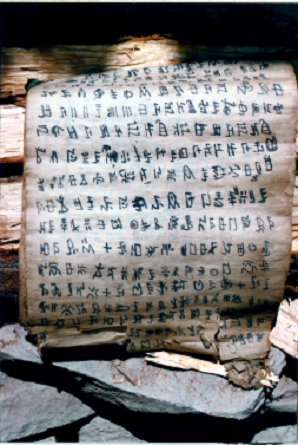 |
| Bimo priest holding a Yi manuscript | Manuscript written in Yi script |
| Photo: Halina Wasilewska | |
| Characteristics of the traditional Nuosu script. One sign – several meanings | |||
| “heaven” “tail” “do” “high” “good” “in a hurry” |
“wind” “home” “heart” “change” |
“beast” “sit” “spring” |
“cloud” “brain” “earth territory” |
Syllabic writing systems
Syllabic scripts may have developed from sets of simplified ideograms or pictograms, which have lost their semantic value. The symbols, nevertheless, have retained their phonetic value and indicate a corresponding syllable. This is how Late Sumerian and Late Egyptian writing systems, and later on the Japanese kana syllabaries (hiragana and katakana), have developed.
Most writing systems of India (abugidas) derived from Brāhmī script are syllabic (or actually alpha-syllabic). They are used in Indo-European languages in North India (e.g. Devanagari, Bengali, Gujarati, Gurmukhi, Oriya and others), but also in Dravidian languages in South India (especially Tamil, Telugu, Kannada, Malayalam).
In North America, there were several attempts to record local American Indian and Eskimo languages with syllabaries. One of the best known of such syllabaries was Tsalagi invented by Sequoyah – a Cherokee from North Carolina. In his script, each grapheme represented a syllable consisting of a consonant and a vowel.
webpage heading: http://www.languagegeek.com/rotinonhsonni/tsalagi/tsa_syllabarium.html
Anothersyllabic (or to be more precise, alpha-syllabic) script is Dené. It is one of the Canadian abugidas developed by Christian missionaries for languages of Aboriginal people in Canada. It has been used mainly in a branch of the Na-Dene language family, the Athabaskan languages, such as Carrier (Dulkw’ahke – according to Ethnologue 2009, 2060 speakers) or Hare (North Slavey – 1030 speakers).
webpage heading: http://www.languagegeek.com/dene/kashogotine/north_slavey.html
Alphabetic writing systems
Alphabets are writing systems in which each grapheme indicates one speech sound, or to be more precise, one type of sound unit (called a phoneme) in a given language. The earliest alphabetic scripts developed in Semitic languages, such as Phoenician, Hebrew and Arabic. Alphabets in these languages (called abjads) used the basic characters to indicate mainly or even only consonants. Vowels (especially short ones) if represented at all, were indicated by additional diacritic marks. In modern Arabic and Hebrew everyday texts the short vowels are also omitted, and readers must supply them according to their knowledge of the language.
Most alphabetic writing systems known today (such as Greek, Latin, Russian Cyrillic) developed from Phoenician writing. Exceptions are for example Georgian and Armenian, two languages with a highly phonemic orthography (meaning that each consonant or vowel phoneme is represented by a corresponding letter). The two scripts are used almost exclusively to write the Georgian and Armenian languages. Nevertheless, other regional languages of Georgia, such as Svan or Megrelian, are also written in Georgian script. Moreover, the Amernian alphabet was used in Armeno-Kipchak, a Turkic language spoken in the past by the Armenians in Poland.
Go to the Interactive Map, try the exercises for Svan.
Most small and endangered languages of the world, if they exist in writing at all, use one of the alphabetic writing systems. They are most often based on the Latin or the Russian (Cyrillic) alphabet. Developing writing systems are also based on of these two alphabets (naturally, the influence of the Russian alphabet reaches mainly countries of the former Soviet Union and Mongolia).
The image below shows the alphabet of the Karata language used in southern Dagestan (a republic of the Russian Federation located in the North Caucasus region). It was invented by the speakers of the language, after the Dagestan authorities and linguists refused repeatedly to do so. According to Ethnologue 2009, there are ca. 5 000-6 000 Karata people, and almost all of them still speak their language. However, the lack of education, resulting also from the prior lack of a written language, makes the intergenerational transmission of the language difficult.
The Mongolian language is an example of a change in the writing system conditioned politically. Traditionally, Mongolian was written in a purely alphabetical script derived from Uyghur. In 1946 Mongolian Communists decided to adopt the Russian Cyrillic script instead, which was supposed to make the classical Mongolian literature inaccessible to the younger generation. Although the classical Mongolian script was reintroduced after the political transformation in Mongolia in 1994, it is used today rather only symbolically and as a means of artistic expression. Nevertheless, the Mongolian script is still used in Inner Mongolia (an autonomous region of the People’s Republic of China), where 17% of inhabitants are Mongolian (which amounts to 4 million). The first language of 2.5 million of these people is Mongolian, a number similar to that of inhabitants of the independent state of Mongolia.
There are writing systems, which are used only by specialists (linguists, ethnographers, ethnomusicologists) to write texts for their own needs, e.g. texts in previously unknown or unwritten languages or languages which do not have their writing systems. Phonetic transcription is the most common technique used to record such texts. It is a system of notation in which each phone has its own invariable graphic representation. A set of such symbols is called a phonetic alphabet. The knowledge of orthography of a given language/script is not required to transcribe and read a transcribed text. However, the symbols of a particular system of transcription have to be used consistently throughout the text. Each field of linguistics (e.g. Slavic, Caucasian or Semitic studies and various dictionaries of English language) has developed its own transcription system. Phoneticians, however, have always tried to invent one system that would enable to transcribe and read texts in any language of the world. The International Phonetic Association succeeded in establishing such a system in 1888 and has been improving its International Phonetic Alphabet (IPA) since then (http://www.langsci.ucl.ac.uk/ipa). After numerous modifications and supplementations, IPA consists of 107 symbols representing consonants and vowels (mainly letters derived from the Latin and Greek alphabets), 31 diacritics modifying these symbols and 19 symbols indicating suprasegmental features such as length, tone, stress and intonation. They are all organised into a clear and systematic diagram http://www.langsci.ucl.ac.uk/ipa/IPA_chart_%28C%292005.pdf
Here is a link to a website which helps to practice the transcription of texts with the IPA symbols – http://www.cambridge.org/resources/0521612357/3744_Chapter%201%20additional%20problems.pdf.
Sometimes texts written in the International Phonetic Alphabet (or other more or less simplified transcription system) are the only attested texts of small endangered languages, which have not developed their writing systems. Here is a link to a website with materials concerning the documentation and transcription of various languages, including endangered ones: http://archive.phonetics.ucla.edu. The website provides examples of audio recordings of these languages and their phonetic transcription.
Writing in IPA requires special symbols, which can now be easily downloaded to any computer. There are also other systems of transcription, which consist of characters available on a standard computer keyboard – one of the most important is SAMPA (Speech Assessment Methods Phonetic Alphabet – the rules of transcription in this alphabet can be found here: http://www.phon.ucl.ac.uk/home/sampa/index.html). See also Chapter 4: The Sounds of Language on phonetic transcription in general and on SAMPA.
When working with two or more different writing systems, there is often the need to convert one of them into another. Such a process is called transliteration, especially if the source text is to be converted into an alphabet, i.e. a set of letters. The more consistent the transliteration is, the easier it is to work with the transliterated text. In order to avoid ambiguity and misunderstandings, some countries have adopted standardised official transliteration systems to convert their native writing systems into Latin alphabet. For example, the government of the People’s Republic of China promotes the pinyin system to transliterate the Chinese ideograms [2]. Whereas the Hepburn system of transliteration, called romaji, has been used traditionally in Japan.
Developing a written form of small languages – graphisation
As Mühlhäusler (1990: 205) observed, developing a written form of a language or its variety (graphisation) involves not only a simple selection of appropriate orthography but also making decisions concerning cultural, religious, political and historical matters. Writing languages without considering these aspects is usually simply a transcription mentioned above.
Thinking about the graphisation of a language – either as a large-scale group project or an individual’s need and initiative – one has to take into consideration the fact whether a given community has ever used any writing system to write their own language or this language has always remained oral.
Another very important aspect is the cultural and religious context behind the functioning of a particular writing system. As Diringer (1968) stated, „alphabet follows religion”. It may be observed that a text written in Cyrillic/Russian script brings associations with the Eastern Orthodox Church, while in Eastern Europe, the Latin alphabet was associated until recently with Western Christianity (especially, the Catholic Church). The Arabic script is associated with Islam, Hebrew with Judaism, scripts of South Asia with Buddhism, Brahmanism and Hinduism, and the Chinese script with Confucianism. Assigning a certain writing system to a language often means connecting it with or strengthening its connection with a particular culture. It may happen that two similar language varieties become two separate languages after they adopt different writing systems, for example Serbian and Croatian, Hindi and Urdu, Chinese and Dungan, and in the past – Romanian and Moldovan.
Here is a link to an audio recording in the Dungan language: http://www.youtube.com/watch?v=X9TMy06J7XU&feature=related. The Dungans are the descendants of the Chinese-speaking Hui Muslims, who have settled in today’s Kyrgyzstan and Kazakhstan. Because they lived in isolation from China and adopted the Russian alphabet, the Dungan language has changed significantly and differs from the original Chinese dialects. It is now considered an ethnolect on its own.
Leaders of nation states have used graphic changes of writing systems as a part of the process of transforming the societies culturally, as for example the Turkish leader M. K. Atatürk, who introduced the Latin alphabet instead of the one based on the Arabic script and at the same time ordered loanwords of Arabic origin to be removed from the Turkish language. The previously mentioned change introduced in the Mongolian language had a similar character. These reforms were supposed to bring the civilisations closer to Western Europe (Turkey) and the Soviet Union (Mongolia). What is worth remembering, after the suppression of the January Uprising, the Russian government intended to change the Polish writing system from the Latin alphabet into the Cyrillic. Naturally, it would have changed the cultural orientation of Polish people as the citizens of the Russian Empire in the long term, and possibly would have led to the endangerment of the Polish language (see: http://www.niniwa2.cba.pl/cyrylica_nad_wisla.htm and the Polish text of the Hail Mary prayerwritten in Cyrillic:
The graphisation of minority languages in multinational states may also have a political background. As mentioned in Chapter 7 on Multilingualism,the language policy set by Lenin in the 1920’s aimed at establishing Latin-derived alphabets for the previously unwritten languages of the Soviet Union. Then, at the end of the 1930’s most of these alphabets were modified and based on the Russian script as a part of Stalin’s language policy in the USSR.
After these manipulations with graphic systems, some languages of the former Soviet Union have not decided definitively about their writing systems until today. The Crimean Tatar language classified as endangered may serve as an example here. It is used as a native language in Crimea located in the Ukraine and in the Central Asian countries of the former USSR. Below is a Crimean Tatar book with stories for children, which is written with both Latin and Cyrillic letters.
After 1951, the Soviet pattern was followed by the government of the People’s Republic of China, when it aimed at the graphisation of many previously only oral languages of various minority groups. What is interesting, none of the non-Chinese languages adopted the ideographic Chinese script – they all remained in their cultural and religious domains, which was expressed by the usage of other traditional writing systems or new scripts invented based on an extended/modified Latin alphabet or phonetic alphabet (e.g. IPA). The tradition of numerous writing systems among peoples living in China is reflected for example in the Chinese banknotes. The words featured on the notes are written in the Chinese ideograms, the Latin transliteration of pinyin, and at the bottom of the reverse, in Old Mongol, Tibetan, Uyghur based on the Arabic script and severely modified script of the Zhuang language (based on the Latin alphabet completed with the IPA characters).
ADVANTAGES AND PROFITS
In the opinion of a community speaking a rare language, inventing and introducing a writing system for that language may:
- increase its prestige and make it (more) noticeable (=present) in the public life;
- help to preserve (=record) the important elements of the native culture, such as oral literature;
- facilitate education and thereby hinder the process of abandoning the language;
- make it easier for its speakers to access global and popular culture without the need to use the major (inter)national languages.
The graphic presence of a minority language in the linguistic landscape may make a given minority a significant element of the local culture visible in real-life domains, e.g. administrative or geographical. Below is a photograph taken in 2007 at the celebrations during a ceremonial uncovering of a bilingual road sign – the first in history – in the Kashubian village of Szymbark/Szimbark in the Pomeranian region. The local prestige of the Kashubian language has increased significantly in the recent years, which is reflected in its more and more frequent presence in the linguistic landscape of the region.
The written variety of an endangered language enables the documentation of important elements of local, folk and previously oral culture. An attempt to create a literary standard for the Wilamowicean language by Florian Biesik in the 1920’s may serve as an example here. This endangered, archaic language derived from 13th century Middle High German is spoken by several dozen inhabitants of Wilamowice, a town located in southern Poland. The first page of the manuscript of Biesik’s narrative poem describing the material and non-material culture of his native town of Wilamowice is presented below.
Recent attempts to revive the Wilamowicean language include its re-graphisation and making it a part of the local linguistic landscape. See below the photograph presenting the billboard welcoming people arriving at Wilamowice.
The publication of the basic works of literature in the adopted literary standard may also help to increase the prestige of an endangered language. In some cultures, one of such works is the Bible.See below the title page of the New Testament publishedin the language of the Ruthenians from the Autonomous Province of Vojvodina in Serbia. It contributed greatly to strengthening the linguistic, cultural and religious identity of this diasporic community.
The visible graphic attestation of the language is important for many endangered language communities with insecure intergenerational transmission. Therefore, (young) readers should have access to the written/published versions of the classic works of world literature, more and more frequently including popular literature as well. It would not be possible without the standardisation of the written varieties of those languages. Examples of such initiatives are given below:
- the publication of the classic English book for children, Winnie-the-Pooh byA. A. Milne, in standard Scots. The Scots language has very low prestige in Scotland. The intention of the publishers was not only to increase the prestige of the language but also to provide educational reading material which is valued within Scotland.
- the publication of popular children’s literature classics, such as Le Petit Prince (The Little Prince) by A. de Saint-Exupéry and Asterix byR. Goscinny and A. Uderzo. The release of these titles in Molise Croatian and Mirandese were the first in history popular literature publications in these languages.

Molise Croatian (on the left) is a South Slavic language spoken by approximately 3 000 people living in three villages in the Italian Molise province. Mirandese (on the right) is the only indigenous minority language of Portugal spoken by ca. 5 000 inhabitants of the city of Miranda de Douro in the northeastern area of the country.
Thus, for more and more endangered languages the existence of a written form/standard of a language has become a subjective or objective condition for the preservation of linguistic identity.
Let’s Revise! – Chapter 5
Go to the Let’s Revise section to see what you can learn from this chapter or test how much you have already learnt!
Notes
[1] More about the script: Gaca, Maciej 1997. Literatura piktograficzna Naxi (Chiny Południowe). Stęszew: International Institute of Ethnolinguistic & Oriental Studies.
[2] It differs, however, from the system adopted for Chinese in Taiwan (i.e. the Republic of China).
References & further reading
- Bouquiaux, Luc & Jacqueline M.C. Thomas 1992. Studying and Describing Unwritten Languages. SIL International.
- Coulmas, Florian 2003. Writing Systems. An introduction to their linguistic analysis. Cambridge University Press.
- Diringer, David 1968. The alphabet: A key to the history of mankind. 3rd revised edition. London: Hutchinson.
- Fischer, Steven Roger 1997. Rongorongo: The Easter Island Script: History, Traditions, Texts. Oxford Studies in Anthropological Linguistics 14.
- Fischer, Steven Roger 2003. A History of Writing. London: ReaKtion Books.
- Gaca, Maciej 1997. Literatura piktograficzna Naxi (Chiny Południowe). Stęszew: International Institute of Ethnolinguistic & Oriental Studies.
- Lüpke, Friederike 2011. „Orthography development”, w: Peter K. Austin & Julia Sallabank (red.) The Cambridge Handbook of Endangered Languages. Cambridge University Press. Ss.312-336.
- Majewicz, Alfred F. 1989 Języki świata i ich klasyfikowanie. Warszawa: PWN.
- Mühlhäusler, Peter 1990. “’Reducing’ Pacific languages to writing”, w: John Joseph & Taylor Talbot (red.) Ideologies of Language. London: Routledge. Ss. 189-205.
- Sampson, Geoffrey 1985. Writing Systems. A linguistic introduction. London: Hutchinson.
- Yule, George 2010. The study of language. Cambridge University Press.
- Vakhtin, N. B. 1991. The Yukagir language in sociolinguistic perspective. Stęszew: International Institute of Ethnolinguistic and Oriental Studies.
- Vaux, Bert & Justin Cooper 1999. Introduction to Linguistic Field Methods. Lincom Europa.
Website about Cherokee syllabary: http://www.languagegeek.com/rotinonhsonni/tsalagi/tsa_syllabarium.html
English translation by: Agnieszka Lewandowska.
back to top

